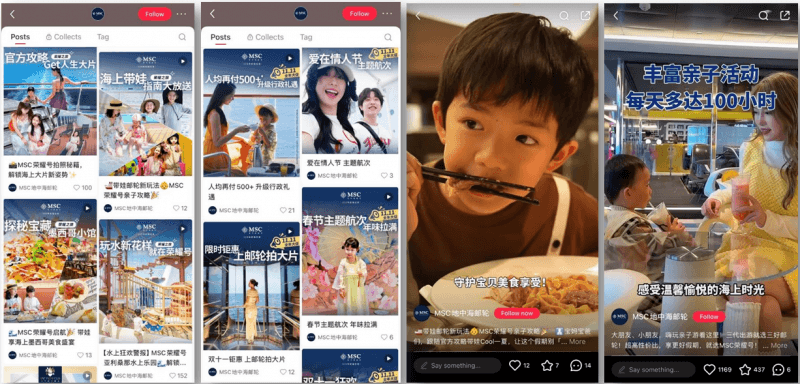Welcome to the Thunderdome: Chinese Family Vacation Edition
In 2025, Chinese family tourism isn't just back—it's evolved into a financial juggernaut that makes other travel markets look like lemonade stands. Gone are the days when a bus tour and a selfie stick constituted a satisfactory family vacation. Today's Chinese family travelers—led by Millennials and Gen Z parents who consider Wi-Fi more essential than oxygen—are revolutionizing global tourism faster than you can say "WeChat Pay accepted here."
If you're still marketing to Chinese families like it's 2019, you might as well be advertising your destination via smoke signals or carrier pigeons. The game has changed, and this guide will help you avoid becoming the digital equivalent of that restaurant with "AUTHENTIC CHINESE FOOD" in Comic Sans on the window.

The New Rules of Chinese Family Travel (Or: How to Keep Up With People Who Changed the Game While You Were Still Learning the Rules)
1. Digital-First Planning (AKA: If It's Not Online, It Doesn't Exist)
- Online Booking Dominance: 78% of Chinese families now plan and book their trips entirely through digital platforms. The remaining 22% are probably lost or being helped by their children to figure out how technology works.
- Social Media Influence: Platforms like Xiaohongshu (小红书) and Douyin drive 65% of travel inspiration. That's right—two-thirds of travel decisions are influenced by perfectly filtered photos and 15-second videos. Your expensive TV commercial? Might as well have aired it in an empty forest.
- Mobile-Centric Approach: With smartphone penetration at 98% among potential travelers, the remaining 2% are either exceptionally committed to digital detox or accidentally dropped their phones in the toilet and are waiting for a replacement.
2. What Chinese Families Actually Want (Hint: Not Another Bus Tour)
- Experiential Travel: Today's Chinese families want meaningful, immersive experiences rather than checking landmarks off a list. "We came, we saw, we took selfies" is no longer enough. Now it's "We came, we learned how to make authentic pasta from an Italian grandmother, we documented the entire process in a 15-part video series that went viral."
- Multi-Generational Trips: Extended family group travel is booming, meaning your destination needs to simultaneously entertain a 7-year-old obsessed with dinosaurs, a teenager glued to social media, parents desperate for Instagram-worthy experiences, and grandparents who require frequent bathroom breaks and comfortable seating. No pressure.
- Educational Tourism: There's growing interest in destinations offering cultural and learning experiences. If your attraction can't be framed as "enriching my child's future" on social media, you might as well be invisible. Chinese parents aren't just showing their kids the world—they're investing in premium neurological development experiences with a side of vacation.

How Not to Fail Spectacularly at Digital Marketing to Chinese Families
WeChat Marketing (Or: How to Navigate the Operating System of Chinese Life)
- Develop official accounts with family-friendly content that doesn't make parents cover their children's eyes or grandparents question their life choices.
- Create mini-programs for booking that require fewer clicks than it takes to turn on a light switch. If your booking process has more than three steps, you've already lost them to a competitor whose mini-program works like a smooth-talking digital concierge.
- Implement targeted advertising using WeChat's algorithm that knows Chinese users better than they know themselves. If Facebook's targeting is a butter knife, WeChat's is a laser-guided surgical tool.
Content That Won't Make Chinese Families Cringe
- Develop Mandarin content that actually resonates with Chinese family values, not content that was clearly written in English and pushed through Google Translate with all the finesse of a rhinoceros performing ballet.
- Showcase family-friendly amenities and safety features because Chinese parents would rather cancel a trip than put their precious only child (or increasingly, children) at risk. Your charming "authentic" experience with questionable safety standards is their nightmare vacation scenario.
- Use storytelling that connects emotional and practical travel motivations. Chinese families want both the heart-warming family bonding AND the practical value-for-money package. They're not choosing between sentimentality and pragmatism; they demand both simultaneously.

Who You're Actually Marketing To (Spoiler: It's Complicated)
- Primary Audience: 30-45 year old parents who grew up with enough economic anxiety to be careful with money but enough exposure to global trends to want the best for their families. They're comparing your offering to 37 others while on a conference call and helping with homework.
- Secondary Audience: Grandparents who are often bankrolling the trip and have strong opinions about everything from accommodation to itinerary. Ignore them at your financial peril. They might not book the trip themselves, but they can veto faster than a Chinese government censor on a social media platform.
- Emerging Segment: Young professionals planning future family trips because in China, planning for family experiences starts about the same time as planning for retirement—way earlier than you'd expect. They're researching family-friendly destinations before they've even decided on a spouse.

Technology That Makes Yesterday's Innovation Look Like Actual Antiques
AI-Driven Personalization (Because Generic is the New Obsolete)
- Implement AI recommendations for family-specific travel packages sophisticated enough to suggest activities based on the family's previous travel patterns, the children's developmental stages, and the likelihood of grandparents complaining about walking distances.
- Develop predictive algorithms understanding Chinese family travel patterns better than the family themselves. "Your 7-year-old will need a bathroom approximately 27 minutes into this tour, and we've identified the cleanest facilities along your route."
- Create personalized itineraries based on family composition and interests that balance educational value, Instagram worthiness, and minimal family conflicts per day.

Where They're Actually Going (When They're Not Going to Your Destination)
Top Family-Friendly Destinations Stealing Your Chinese Customers in 2025
- Japan: Offering the perfect blend of cultural experiences, safety standards that would satisfy the most anxious Chinese grandmother, and enough Hello Kitty merchandise to fill an extra suitcase.
- Thailand: Family-friendly resorts where parents can alternate between posting envy-inducing beach photos and working remotely while the kids are entertained by staff who somehow know exactly what Chinese children want.
- Singapore: Educational experiences wrapped in an English-speaking, ethnically Chinese environment that makes parents feel like they're investing in their child's future while eating chili crab.
- Australia: Nature and learning opportunities plus the strategic advantage of being in the same time zone, so parents can still respond to urgent work messages while pretending to be completely disconnected.
- European Countries: Offering cultural diversity and the opportunity for children to casually mention "When I was in Paris..." in conversations for the rest of their lives.

The Money Part (Because We All Know That's What You're Really Interested In)
Spending Patterns That Will Make Your Revenue Projections Look Conservative
- Average Family Travel Budget: ¥50,000 - ¥150,000 per trip (approximately 7,000-21,000), which is more than some Western families spend on their car.
- Willingness to Pay for Quality: 62% prefer comprehensive, hassle-free packages. Translation: Chinese families will pay premium prices if you promise to eliminate all potential stress points, including but not limited to: language barriers, unexpected waiting times, unclear instructions, and uncomfortable conversations with strangers.
- Investment in Experiences: They're prioritizing unique, memorable moments over luxury accommodations because sleeping arrangements are temporary but WeChat moments are forever. A standard hotel room with an extraordinary experience will win over a luxury suite with a basic tour every time.
Conclusion: The Art of Not Being Completely Clueless
The Chinese family travel market in 2025 isn't just about destinations—it's about creating meaningful, technologically enhanced, and culturally rich experiences that generate enough social media content to keep grandparents bragging for months. Marketers who understand the nuanced digital landscape and deeply respect Chinese family dynamics (including the complex power dynamics between multiple generations) will successfully capture this growing market.
Those who don't adapt will be left wondering why their beautiful brochures (yes, actual paper) and English-only website are attracting approximately zero Chinese families.
Your Actual To-Do List (If You Want Any of This Money)
Foreign travel brands must:
- Invest in localized digital strategies that go beyond "we accept UnionPay" signs at the register
- Understand cultural nuances deeper than "Chinese people like red and take a lot of photos"
- Provide transparent, comprehensive travel solutions that consider three generations' needs simultaneously
- Stay ahead of the curve—because while you're reading this guide, a tech company in Shenzhen is probably inventing a new app that will change travel planning all over again
Remember: In Chinese family travel, the journey is important, the destination is important, the educational value is important, the comfort is important, the food is important, the photo opportunities are important... actually, everything is important. No pressure.